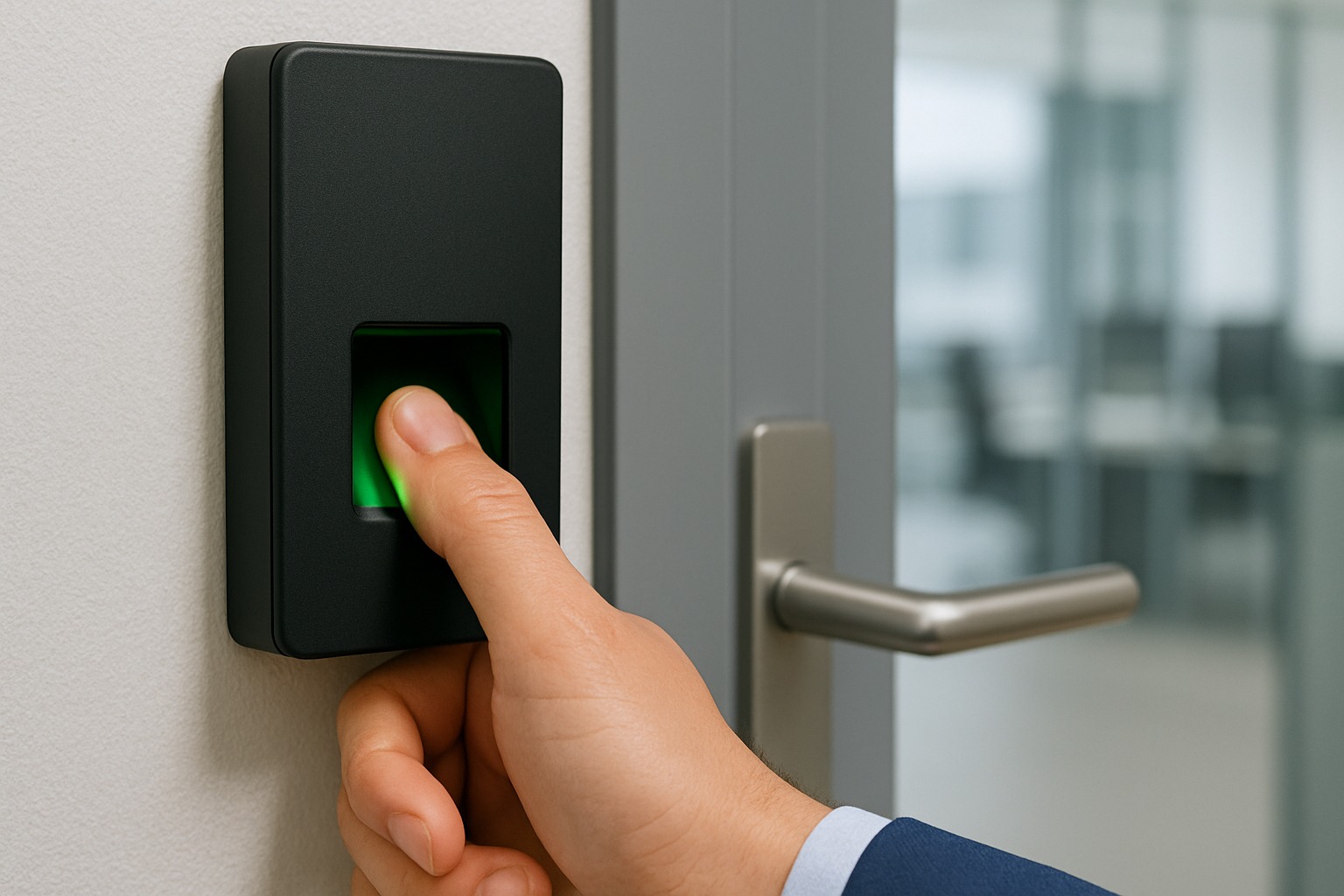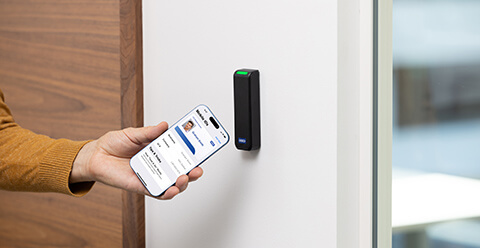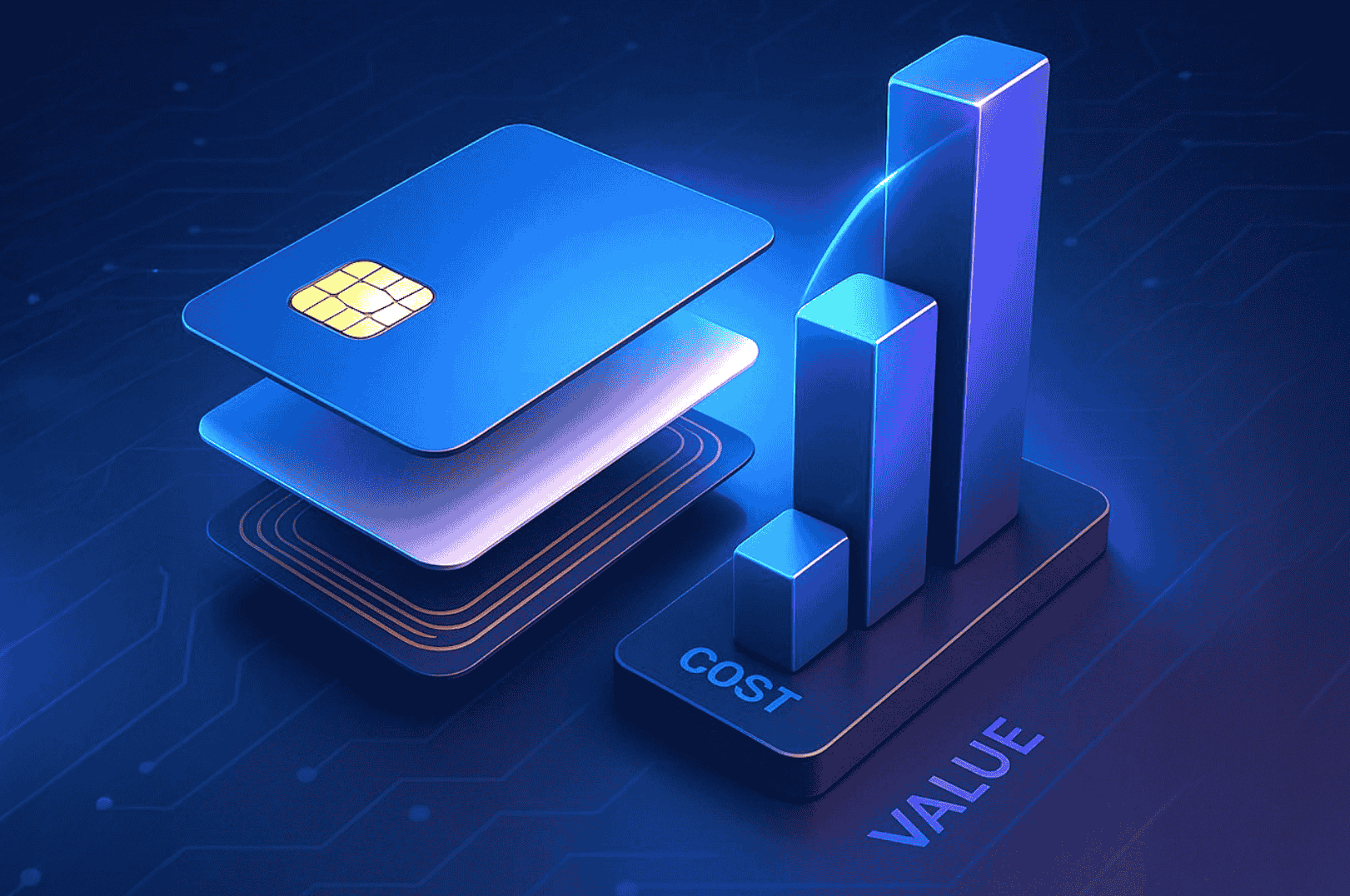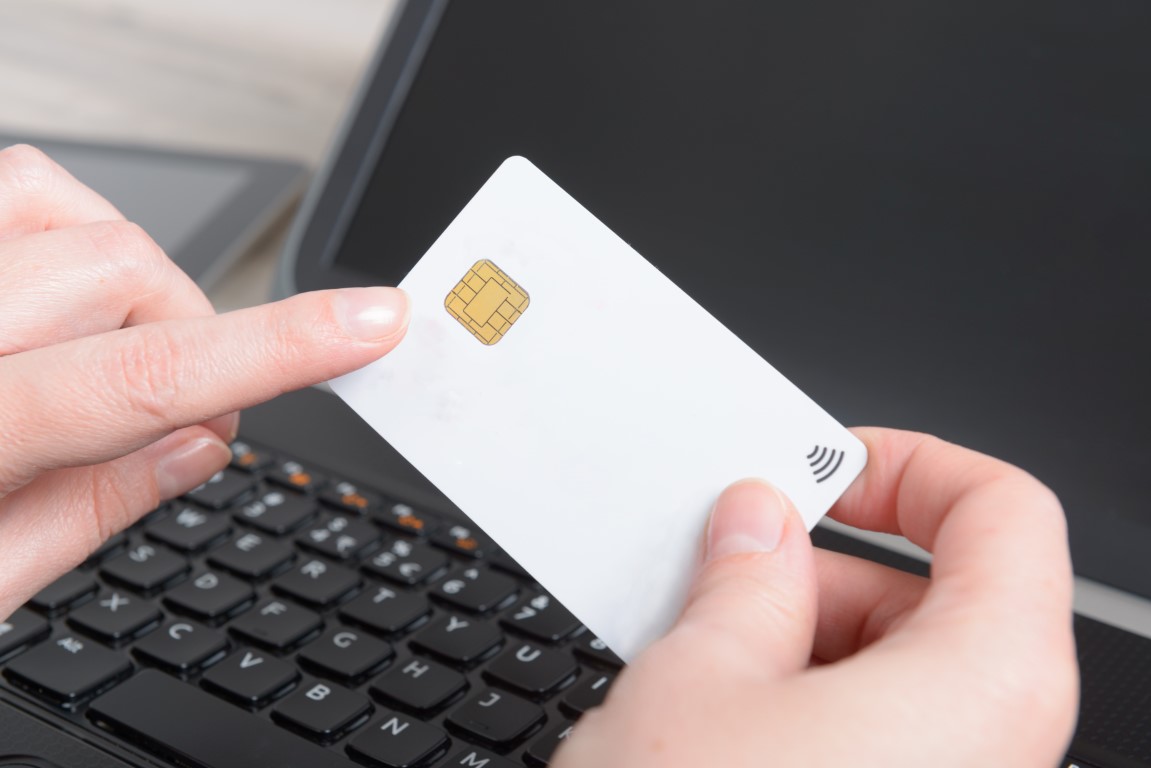The smart card is a physical identification device that includes an embedded integrated circuit (ICC) that can either have a secure internal processor and operating system or just a simple discrete memory. The card connects to the reader with a direct physical connection or with a wireless radio interface. Through the operating system installed on the chip, the smart cards are equipped with a unique ability to store large amounts of data, perform operations on the card itself (for example, encryption and free authentication) and operate intelligently with a smart card reader. Smart card technology complies with international standards (ISO/IEC 7816 and ISO/IEC 14443) and is available in a variety of forms, including plastic cards such as credit cards, subscriber identity modules (SIMs) used in cMobile phones, and USB-based tokens.
There are two general types of smart cards: Contact and Contactless.
Smart cards with contact: these cards require a physical direct connection to the external contacts on the face of the card (usually gold-plated). The communication of commands, data and card status occurs through these physical points.
Wireless smart cards: Unlike cards with contact, wireless cards only work in a proximity of a contactless reader. Both the card and the reader have antennas, and communication between them is carried out using radio frequencies (RF) through this wireless link. Most wireless cards get power to the internal microchip from this electromagnetic signal. Their range is usually between one and a half centimeters and up to 7.5 cm for non-battery operated cards, suitable for fast interfaces in applications such as building entry and payment.
Other categories of smart cards can be integrated connection cards or hybrid cards. A hybrid card includes two separate microchips, one with a contact interface and the other with a wireless interface, with no connection between them. In contrast, a dual interface card combines two interfaces contact and wireless to one microchip. This allows access to the chip in two configurations as needed.
Smart cards use two types of chips: a microprocessor chip and a memory chip. Memory chips act like a small portable memory device with some security options, they offer low cost but less security of data management. In contrast, chips with a microprocessor, can run a data processing and verification process, adding, deleting and changing information in their memory. Like a small computer, microprocessor chips enable card operations such as encryption and digital signatures and efficient communication with smart card readers.
Choosing a specific card technology is influenced by a variety of variables, including:
- The dynamics of implementation
- Existing market infrastructure
- The economics of the business model
- Common Application Cards Strategy
Smart cards are used in a wide variety of applications worldwide, including:
- Secure identity verification applications – employee ID cards, citizen IDs, e-passports, driver’s licenses, online authentication devices
- Health applications – health identification cards for citizens, doctor identification cards, mobile medical bag cards
- Payment applications – contact and wireless credit/debit cards, transport payment cards
- Telecommunication applications – identification modules for GSM subscribers, cell phone payment cards






